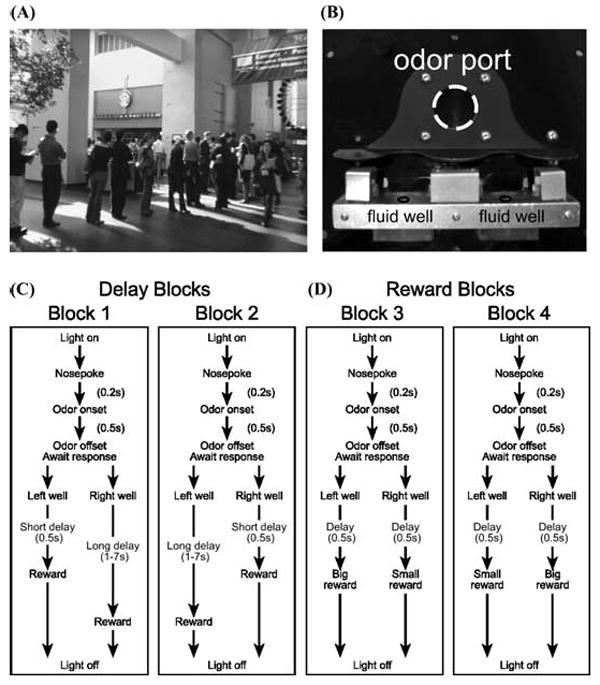FIGURE 1.

(A) Photograph taken at the annual neuroscience meeting in 2005 illustrates the all too familiar situation of waiting in an endless line for coffee. Late to the conference and in desperate need of caffeine you have to decide, do I go left and wait for coffee, or go right and see that last poster on my itinerary. (B) Apparatus used in our lab to study this type of decision making. (C–D). Choice task during which we varied (C) the delay preceding reward delivery and (D) the size of reward. Figure shows sequence of events in each trial in four blocks in which we manipulated the time to reward or the size of reward. Trials were signaled by illumination of the panel lights inside the box. When these lights were on, nosepoke into the odor port resulted in delivery of the odor cue to a small hemicylinder located behind this opening. One of three different odors was delivered to the port on each trial, in a pseudorandom order. At odor offset, the rat had 3 sec to make a response at one of the two fluid wells located below the port. One odor instructed the rat to go to the left to get reward, a second odor instructed the rat to go to the right to get reward, and a third odor indicated that the rat could obtain reward at either well. (C) One well was randomly designated as short and the other long at the start of the session (block 1). In the second block of trials these contingencies were switched (block 2). (D) In later blocks we held the delay preceding reward delivery constant while manipulating the size of the expected reward (adapted from Roesch et al.33).
